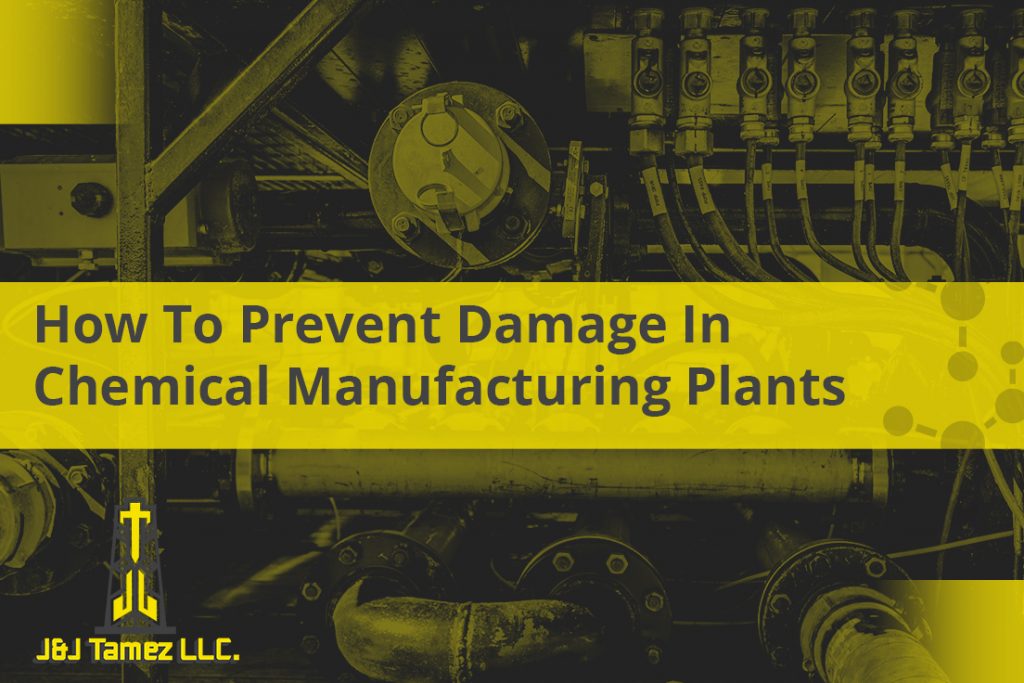How to Prevent damage in Chemical Manufacturing Plants

Chemical production plants are full of potential dangers to the safety of your employees. Every day workers come into contact with hazardous chemicals, which can cause severe injury or death.
It’s imperative to find ways of reducing the risk of accidents. For example, implementing fall prevention strategies are critical to workplace safety. Before planning this, it’s essential to understand what types of injuries occur in chemical plants, and most importantly, why they occur.
Common Injuries at Chemical Manufacturing Plants
Chemicals can be highly flammable and toxic, making chemical manufacturing plants extremely dangerous. Chemical plants’ common injuries include chemical burns, trips and falls, overexertion, cuts and scrapes, chemical exposure, and inhalation of chemicals.
Causes of Accidents in Chemical Plants
Even when taking precautions to reduce the risk of accidents in chemical manufacturing plants, they still occur from time to time. Knowing how and why accidents occur will help to prevent any accidents.
Here we’ve defined three leading causes of accidents in chemical manufacturing plants:
Human Error and Complacency
Most accidents at chemical plants result from human error and complacency, like workers taking shortcuts or failing to follow safety procedures set forth by the company.
Improper Training
Shortcuts are mostly the result of inadequate safety training. As a rule, train your whole staff on operating safety equipment and following proper loading/unloading procedures. Your employees should know what to do if something goes wrong and how to tackle it before it gets out of control.
Not Properly Maintaining Safety Equipment
Installing safety equipment isn’t enough. Regular maintenance at scheduled intervals is essential according to manufacturer recommendations. If your equipment isn’t properly maintained, it causes malfunction and, unfortunately, results in accidents when employees work on and around the machine.
3 Strategies to Improve Fall Prevention
One fatal fall is enough to affect your business’s bottom line. Practice these three steps to help improve fall prevention at your chemical plant:
Install Custom Safety Equipment
Safety equipment installation the first step towards reducing the risk of injury at your chemical manufacturing plant. The right safety equipment goes a long way in keeping workers safe without sacrificing efficiency. When choosing equipment, always keep your eye on the ease-of-use. If the equipment is too difficult to use, your employees will take shortcuts.
Train Employees on Proper Safety Procedures
It’s imperative to train your employees on safety procedures, especially when dangerous chemicals are involved. Make sure your workers understand the dangers of their working environment with chemicals, and the vital thing is that they always wear protective clothing. Also, teach your employees how to use fall prevention equipment safely. This includes having information on any challenges they may face and how to overcome them safely.
Create Designated Loading/Unloading Spots
Falls and other injuries are more likely to happen when loading and unloading occur in an area without fall prevention equipment.
Make clearly defined loading/unloading spots in your facility by installing custom safety solutions in those areas. Don’t forget to notify all employees of this change and conduct regular audits to ensure everyone is using safe loading and unloading procedures.
The chemical manufacturing plant is full of safety hazards. Even with the safety equipment, we train our employees and give attention to proper safety procedures because an accident is likely to occur at some point.
By understanding the workplace danger and taking actions to address them, you can create a safer workplace for your team.
Also Read: How to choose an Oil Analysis Laboratory?
